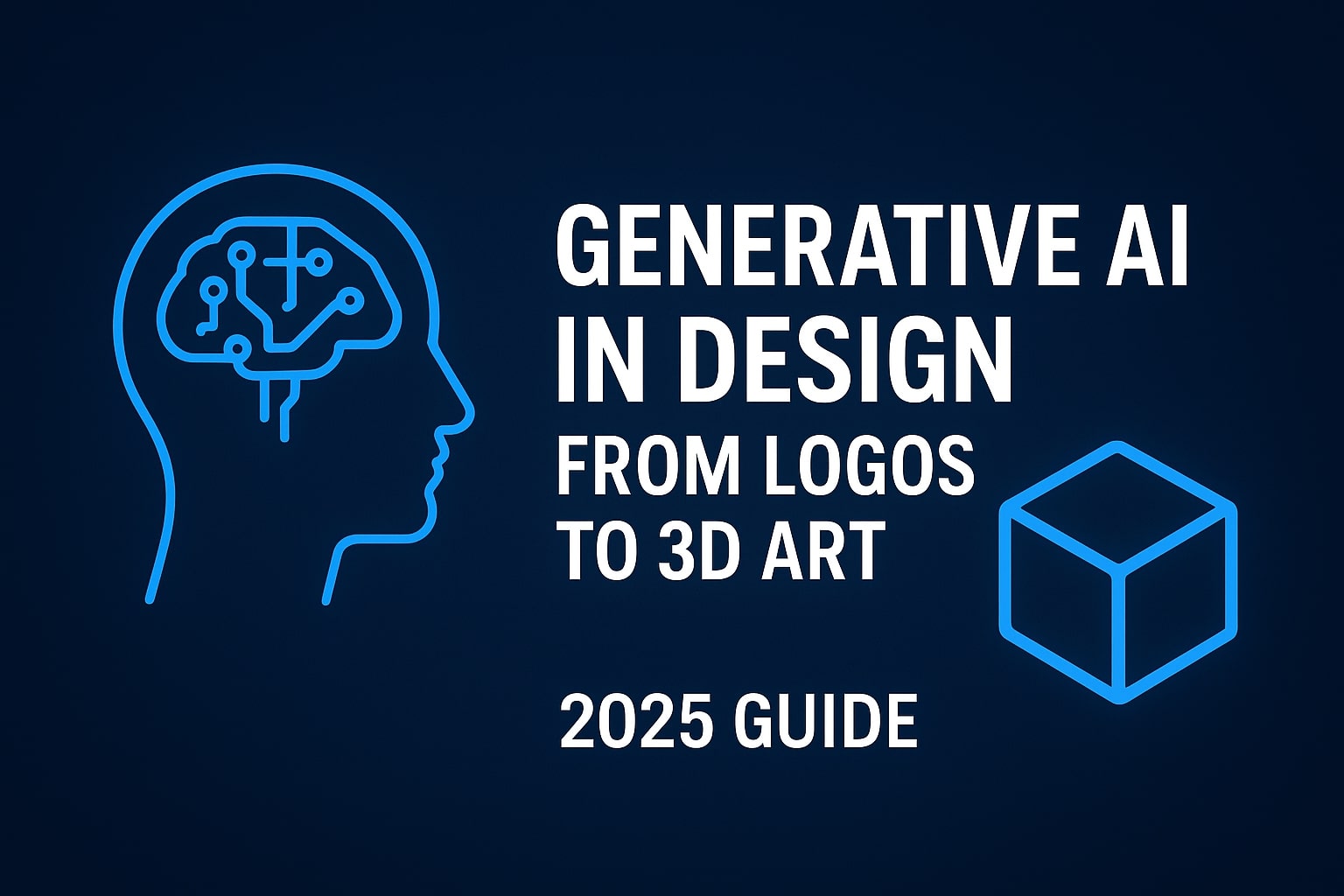Generative AI in Design is driving a creative revolution. These tools act as co-pilots for designers, accelerating workflows and unlocking new forms of creativity. This guide explains how generative AI is reshaping design in 2025, from graphic design to 3D modeling.
How Generative AI is Transforming Design
AI design tools learn from millions of images, logos, and 3D models. Consequently, they understand styles, compositions, and color theory, allowing them to generate original assets from simple text prompts.
Applications Across the Design Spectrum
Graphic & Logo Design
Tools like Midjourney, DALL-E 3, and Adobe Firefly generate numerous logo concepts, icons, and marketing graphics in seconds.
Use Case: “Generate a minimalist logo for a sustainable coffee shop called ‘BeanCycle’. Use a circular design with green and brown colors, incorporating a coffee bean and a recycling symbol.”
UI/UX & Web Design
AI can quickly create wireframes, mockups, and functional code components from a prompt. For instance, it can produce a complete landing page layout in minutes.
Use Case: “Create a wireframe for a mobile app landing page for a fitness tracker. Include a hero section, feature highlights, a testimonial carousel, and a call-to-action button.”
3D Art and Asset Creation
Tools like OpenAI’s Point-E and NVIDIA’s GET3D generate 3D models from text. This drastically reduces time for game development, animation, and AR/VR projects.
Use Case: “Generate a low-poly 3D model of a fantasy sword with a glowing blue crystal embedded in the hilt.”
Marketing and Advertising
AI can produce entire ad concepts, including imagery and copy, tailored to different platforms and audiences. This streamlines campaign creation while maintaining brand consistency.
The Designer’s New Role: Creative Director
Generative AI does not replace designers. Instead, it reshapes their responsibilities:
- From Creator to Curator: Designers select and refine AI-generated options, ensuring quality and creativity.
- Master of the Prompt: Articulating a clear vision through precise prompting becomes essential.
- Focus on Strategy & Refinement: Designers spend less time on initial drafts and more time on strategy, client communication, and final touches.
Generative AI acts as a creative assistant, handling iterations and idea generation. Designers can focus on imagining, directing, and perfecting designs.
Want to try it? Start by mastering the best practices for writing prompts to control these powerful design tools effectively.
